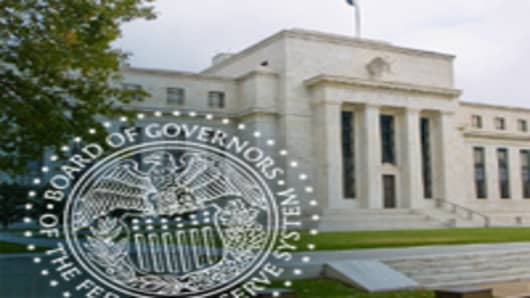In the Fed culture, two dissenting votes at one of its closed-door meetings (the next is Sept. 16) are considered a challenge to the chairman’s authority, raising eyebrows on Wall Street. Three dissents in the past were enough to sink a chairman.
Mr. Plosser argues, however, that Mr. Bernanke, breaking with the practices of past chairmen, encourages differing views, and Mr. Plosser’s dissenting vote, rather than challenging Mr. Bernanke’s authority, would help to communicate the differences that exist among the policy makers.
“Dissent serves a function of illuminating for the public the nature of the policy debates,” Mr. Plosser said.
A big issue in that debate is whether a 2 percent federal funds rate is “accommodative,” as Mr. Plosser put it. Those in his camp argue that it is low enough to encourage people to borrow and spend. Companies would respond to this surge in spending by raising prices, and hence the inflation rate would rise.
The Bernanke camp, in sharp contrast, asserts that 2 percent is anything but accommodative. The nation’s banks and other lenders are indeed borrowing at that rate, to rebuild their capital, but they are lending to consumers at much higher rates — 5 to 6 percent, or more. The large spread signals that the lenders would prefer not to lend at all rather than to risk new loans that, like so many of the old ones, will not be repaid.
The dissenters at the Fed “don’t seem to place much emphasis on the importance of keeping rates low to offset the wide spreads,” said Lawrence H. Meyer, vice chairman of Macroeconomic Advisers and a former Fed governor.
Still, they have the support of Professor Buiter and some other economists — European and American — who argued over the weekend that central banks should concern themselves only with inflation, and not the additional task of maintaining economic growth, as the Fed is required by law to do.
Indeed, while the Fed has cut the federal funds rate drastically over the last year, the European Central Bank has added a quarter of a percentage point to its equivalent of the federal funds rate, suggesting to many that Jean-Claude Trichet, president of the European bank, must be critical of Mr. Bernanke’s failure to embrace an anti-inflation approach.
Mr. Trichet was here over the weekend, and at one of the sessions, he publicly supported the Bernanke approach. Europe, he said, has not yet been hit with “the volume of shocks” to its economy that the United States has suffered, and if he were in Mr. Bernanke’s shoes, he would do as the Fed chairman has done.
“I do not agree that the Fed is too accommodative,” he said.


